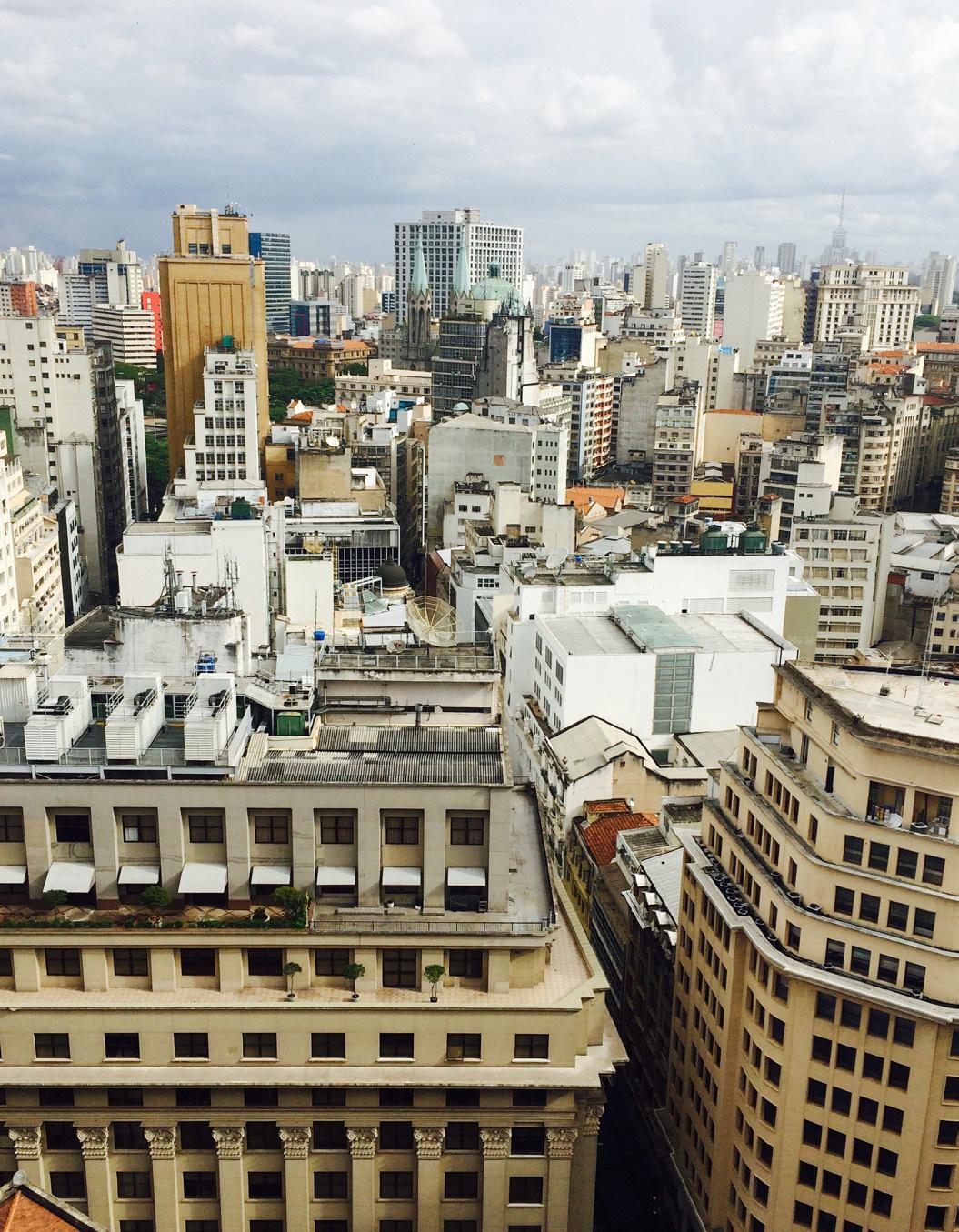
1 minute read
Metro São Paulo Environmental Landscape
The São Paulo Metropolitan Region faces many environmental conflicts arising from fast urban growth along the periphery, rampant resource consumption and drought, and a lack of proper sewerage.
Many rivers run through the municipality of São Paulo. Among them, the Tietê River, and its tributary, the Pinheiros River, are of the most importance and were once sources of freshwater and leisure for São Paulo.
28 (left) São Paulo Center Skyline.
However, industrial effluents and wastewater discharges in the last half of the 20th century caused the rivers to become heavily polluted.
São Paulo City has two major reservoirs– the Billings and the Guarapiranga. These reservoirs are located on the southern outskirts of the city and serve as power generation, water storage, and leisure activities.
Since the 1950s, the City of São Paulo has experienced immense urban growth and expansion. However, the lack of available land for low-income housing near the city center has led to population growth in informal land occupations in the periphery. As a result, settlements began to move to the peripheral areas. Thirtysix percent of the city is in a protected watershed area. In the 1980s, people began to occupy the protected area in the sub-watersheds of the Billings and the Guarapiranga reservoirs (Jacobi, 2004).
Water contamination from informal settlements around these reservoirs poses an environmental concern. The quality of the Guarapiranga reservoir has worsened despite the implementation of the Guarapiranga pollution control program in 1992. The Billings Reservoir has improved since an electricity company was restricted from transferring heavily polluted water from the Pinheiros River (Johnsson, 2005).
The lack of proper sanitation facilities and domestic waste that are ultimately dumped into the water bodies and left unmanaged also threaten environmental health of the São Paulo Metropolitan Region (Jacobi et al., 2013). Sixty percent of municipal sewage in the City of São Paulo goes untreated (França, 2017). The dumping of industrial effluents and pesticides from agriculture has resulted in additional pollution.






